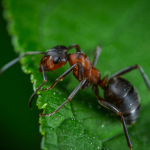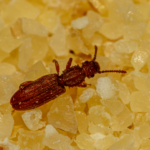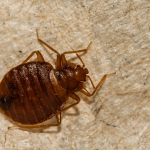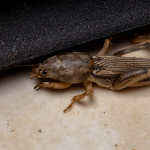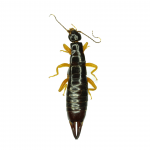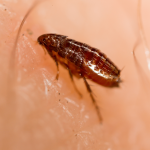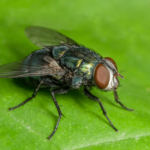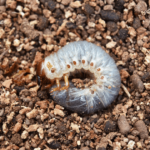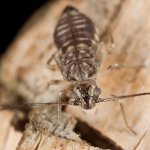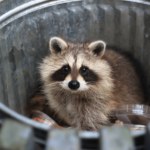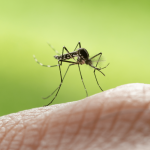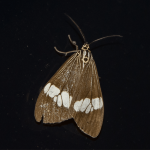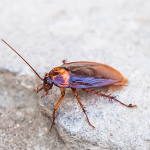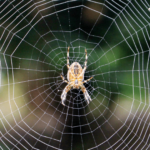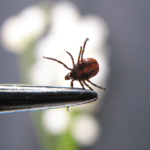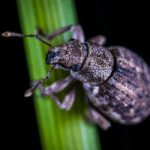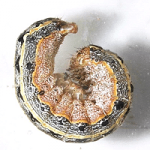Identify Your Pest
Click below to learn more about some of the Southeast’s most common pests.
These insects are usually black or brown in color and can range from 1/8 to 3/8 inches in size.
- May invade homes in search of food
- Feed on sweets
- Colonies also contain several reproductive females and hundreds of thousands of workers
-
Crazy Ants
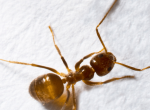
Crazy ants often nest in soil of potted tropical plants and do not survive outdoors in colder climates.
-
Pavement Ants
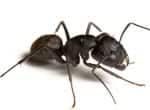
Pavement ants are often found under sidewalks, driveways and building foundations. Look for mounds of displaced soil on pavement cracks or walls. During the winter, pavement ants may nest inside structures near a heat source.
-
Carpenter Ants
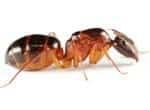
Carpenter ants nest in wood and are often associated with moisture problems. In structures, they are often found where water has leaked and soaked the surrounding wood, around plumbing, and under windows.
- May invade homes in search of food
- Do not eat wood, but feed on sweets, fats, and other insects
- Are most active at night
-
Asian Needle Ant
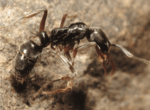
Native to Southeast Asia, the Asian needle ant is an invasive species found throughout the southeast. They prefer areas where it is damp — under rocks, in mulch or leaf debris, and in logs or trees. Although the Asian needle ant is capable of stinging, it is not aggressive like fire ants. The pain produced by a sting can range from mild to severe, and be accompanied by swelling and itching.
- Infest food and non-food storage items such as: rice, grains, cereal, dried flowers or plants
- Hide in dark places
- Generally feed on plants and fungi, break down animal and plant debris, and eat other invertebrates.
-
Cigarette Beetles
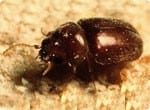
The cigarette beetle is a pest of many stored products, including food and non-food items.
-
Saw Toothed Grain Beetles
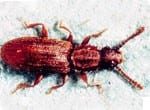
These beetles find their way through packaged cereals, dried fruits, candies, flour, meal, sugar, drugs, dried meat, and tobacco.
Bugs, otherwise known as “true bugs,” are insects that belong to the order Hemiptera.
-
Bed Bugs
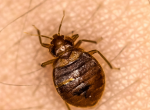
- Bed bugs are blood feeders.
- They lay eggs in door frames, baseboards, and furniture.
- Can move from room to room in search of more food.
To learn more about bed bugs, click here.
-
Chinch Bugs
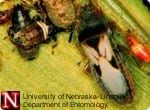
Have patchy, grown grass? Chinch bugs just might be the cause!
- Inject toxins into grass while extracting the juices from it
- Brown spots in the lawn with a surrounding light yellowish area are signs of their presence
- Most commonly found in St. Augustine grass
-
Pill Bugs
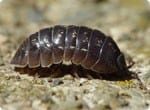
- Commonly referred to as “rollie pollies”
- Feed on decaying plant matter
- Found in damp areas
- Damp mulch is a common nesting place
-
Sow Bugs
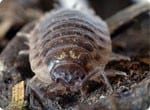
- Feed on decaying matter
- Frequently invade damp basements
- Can be found under rocks, logs, and leaf piles.
Crickets are commonly found in the summer and fall in leaf litter and heavy ground. They can be easily heard by their wings rubbing against each other.
- Primarily live outdoors but can be found indoors looking for moisture
- Feed on plants, grass, clothing, carpet, paper, cotton, linen, and proteins
- Nocturnal
-
Mole Crickets
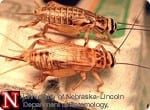
- Cause damage to lawns
- Feed on roots and tunnel just beneath the soil’s surface
Earwigs get their name from the myth that they crawl into people’s ears.
- Active at night and seek shelter during the day under stones
- Feed on dead plants and animal matter
- Can be found in tree holes, mulch, and landscape timbers
Fleas are small, biting parasites that are often associated with animals like dogs or cats. Despite this association, fleas can and do bite humans, and are capable of transmitting diseases while doing so.
- Larvae feed on organic debris and animal blood
- Adults feed on human or other animal blood
- Transmit several diseases
-
Cat Fleas
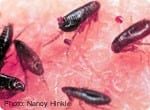
- Most common species of flea
- May be found on dogs or cats
- Nest in areas where dust or organic debris accumulate
- Host tapeworms
- Spread disease
These insects are usually black or brown in color and range from 1/4 to 1/2 inch in size.
- Eggs laid in warm moist environment
- Can only eat liquids
- Solid foods are liquefied with regurgitated saliva
-
Green Bottle Flies
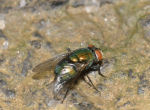
- Lawn pests
- Eggs are laid in the winter and not active till spring
- Stunt plant growth, spread plant viruses, and attract ants
Grubs are the larvae of certain species of beetles.
- Damage lawns by destroying grass roots
- Feed on the fibrous root system of turf during the spring and fall months
- An infestation of grubs may cause lawn damage from other small animals foraging for grubs in lawns.
Unlike true lice, booklice are not parasites.
- Live in damp places
- Often found in great numbers
- Found in tree bark, old papers, books, and stored food products.
Nuisance wildlife can include any species of wild animal that can cause issues in and around homes and businesses. Common offenders include various species of rodents, bats, birds, and reptiles.
To learn more about wildlife, click here.
-
House Mouse
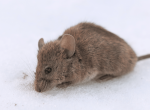
- Contaminate food and carry disease
- Can get through a hole the size of a dime
- Build nests out of string or shredded paper
- Nest building can cause damage to homes and businesses
- Poor vision but have heightened sense of smell, taste, hearing, and touch
-
Squirrels
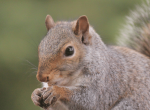
Squirrels are small, active rodents with bushy tails. Fur color can vary greatly, but common species seen in the southeast are gray, brown, or red.
- Will seek shelter in homes (attics) and other structures, where they may damage wiring or insulation
- Natural habitat is in/around trees
- Omnivorous; will eat fruit, nuts, and small insects
- Can be aggressive towards humans if threatened
To learn more about squirrels, click here.
-
Moles
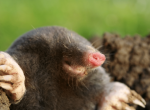
Moles are non-threatening to humans but can be especially problematic for lawns.
- Burrowing animal
- Small in size with short limbs and poorly-developed eyes
- Can cause property damage by digging tunnels under lawns in search of grubs or earthworms
Have a mole problem? We can help. Give us a call at (770) 517-0200.
-
Voles
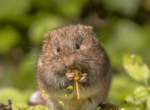
Voles are small rodents similar to mice with grey or brown fur. In fact, voles are commonly called “field mice.”
- Generally more stout/stocky than mice
- Commonly found outdoors in fields or other grassy areas
- Feeds on vegetation like clover and grass, as well as seeds and tree bark
- Can be destructive to gardens and trees
- Active during the day and night
Most mosquitoes rest in a cool place during the day and wait for the evenings to feed. There are about 3,500 species of mosquitoes found throughout the world.
- Breed in standing, stagnant water
- Blood feeders that can spread diseases like West Nile virus and Zika virus
- Nest in moist, warm environments
To learn more about mosquitoes, click here.
Moths are a category of winged insects similar to butterflies.
-
Angoumois Grain Moths
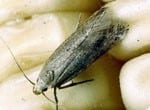
- Usually feed on whole kernels of corn
- Can be found in bird seed or dried corn ears
They bore into the seeds of plants and feed inside the seed covering. Grain moths are common stored product pests.
-
Indian Meal Moths
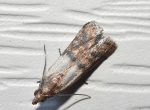
- Mistaken for clothes moths
- Larvae feed on all kinds of grains and grain-based products
- Found in stored product goods
These moths are able to get into tight spots, including sealed bags and Tupperware containers. The food they infest will often seem to be webbed together.
-
Mediterranean Meal Moths
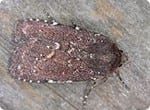
- Infest flour, nuts, chocolate, beans and dried fruits
- Lay eggs in flour or other milled products
- Larvae spin threads that look like webbing
These insects are usually black or brown in color and can be found up to 2 inches in size.
- Found in moist areas
- Can cause infection and disease
-
American Cockroach
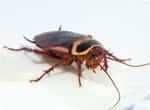
These insects are usually reddish-brown in color and can be up to 2 inches in size. They are the largest species of cockroach to infest areas where humans live.
- Commonly referred to as “palmetto bugs” or “water bugs.”
- Found in moist areas
- Can be difficult to eradicate
Dealing with an infestation? We can help. Give us a call at (770) 517-0200.
-
Smokybrown Cockroach
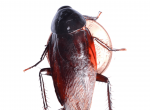
These insects are usually black, brown, or mahogany in color and are characterized by their long wings.
- Usually 1¼–1⅜”
- Often found in warm, moist areas
- Can transmit parasites or trigger allergies
Dealing with an infestation? We can help. Give us a call at (770) 517-0200.
-
German Cockroach
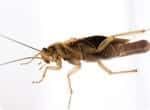
These insects are usually black or brown in color and can be up to 2 inches in size.
- Live in dark, damp locations near food and water sources.
- Can cause infection and disease
Dealing with an infestation? We can help. Give us a call at (770) 517-0200.
Spiders are considered arachnids. Generally, they have eight legs and spinnerets that extrude silk for webs.
-
Brown Recluse
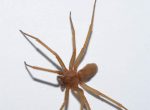
- Bite people as defense mechanism
- Can crawl into shoes, clothing or beds
- Spider bites can produce a bad ulcerating open sore
-
Black Widow
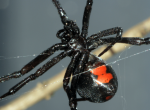
- Paralyze or kill their prey with venom
- Feed mainly on insects and are nocturnal
Like spiders, ticks are arachnids. They are considered parasites and feed on the blood of humans and other mammals.
-
American Dog Ticks
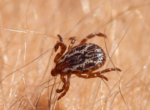
- Dogs are the most favorable host
- Larvae and nymphs feed on small rodents
- Most dispersed species of tick in the United States
- Can transmit Rocky Mountain Spotted Fever and other pathogens
-
Blacklegged (Deer) Ticks
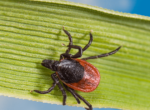
- Also referred to as “deer ticks”
- Adults feed on the blood of their hosts, often white-tailed deer
- Can transmit MANY pathogens including Lyme disease, babesiosis, and anaplasmosis
- Can look similar to dog ticks, though deer ticks are considerably smaller
-
Brown Dog Ticks
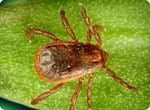
- Found worldwide, though they prefer warm climates
- Common host is the domestic dog
- Can transmit Rocky Mountain Spotted Fever and other pathogens to humans, as well as other tick-borne pathogens to dog
Weevils are a type of beetle known for their ability to damage crops.
-
Grain Weevils
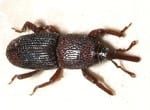
- No functional wings
- Breed only on grain in storage
- Both larvae and adults feed on grain
Grain weevils are the most destructive pests of stored grain. The source of infestation can usually be found in a cupboard in cereals.
-
Rice Weevils
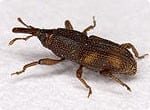
- The most destructive pest of stored grains
- Feed on a wide variety of grains
- Females bore holes in grain kernels to lay a single egg
Rice weevils feed on food products within the home and furniture, clothing, and other fabrics and decorative items.
Worms are a varied group of organisms known for their elongated, cylindrical, bodies and lack of limbs.
-
Army Worms
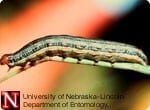
“Armyworms” are the larval stage of a particular species of moth. These pests are known to cause significant damage to lawns.
- Feed in large groups, cutting off parts of grass blades leaving damaged tips
- Are a common sight after cool, wet weather.
-
Sod Webworms
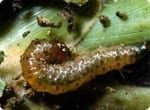
Sod webworms are the larval stage of a particular type of moth, commonly referred to as “lawn moths.”
- Active at night between spring and fall
- Damaged lawns will have irregular patches of chewed or notched grass blades
- Silk webbing seen in the morning dew and moths swarming above the turf surface are signs of an infestation.
Request Your Free Quote
Call (800) 264-4611 or fill out the form below to request your free inspection.

